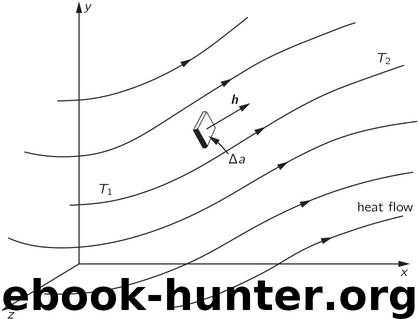The Feynman Lectures on Physics, Volume II by Richard Feynman & Robert B. Leighton & Matthew Sands

Author:Richard Feynman & Robert B. Leighton & Matthew Sands
Language: eng
Format: mobi, epub
Published: 2014-03-11T18:12:49.084874+00:00
Fig. 23–4. The electric and magnetic fields between the plates of a capacitor.
Now suppose that instead of dc, we put an ac of low frequency on the plates. (We will find out later what is “low” and what is “high”.) Say we connect the capacitor to a lower-frequency generator. As the voltage alternates, the positive charge on the top plate is taken off and negative charge is put on. While that is happening, the electric field disappears and then builds up in the opposite direction. As the charge sloshes back and forth slowly, the electric field follows. At each instant the electric field is uniform, as shown in Fig. 23–4(b), except for some edge effects which we are going to disregard. We can write the magnitude of the electric field as where is a constant.
Now will that continue to be right as the frequency goes up? No, because as the electric field is going up and down, there is a flux of electric field through any loop like in Fig. 23–4(a). And, as you know, a changing electric field acts to produce a magnetic field. One of Maxwell’s equations says that when there is a varying electric field, as there is here, there has got to be a line integral of the magnetic field. The integral of the magnetic field around a closed ring, multiplied by , is equal to the time rate-of-change of the electric flux through the area inside the ring (if there are no currents): So how much magnetic field is there? That’s not very hard. Suppose that we take the loop , which is a circle of radius . We can see from symmetry that the magnetic field goes around as shown in the figure. Then the line integral of is . And, since the electric field is uniform, the flux of the electric field is simply multiplied by , the area of the circle: The derivative of with respect to time is, for our alternating field, simply . So we find that our capacitor has the magnetic field In other words, the magnetic field also oscillates and has a strength proportional to .
What is the effect of that? When there is a magnetic field that is varying, there will be induced electric fields and the capacitor will begin to act a little bit like an inductance. As the frequency goes up, the magnetic field gets stronger; it is proportional to the rate of change of , and so to . The impedance of the capacitor will no longer be simply .
Let’s continue to raise the frequency and to analyze what happens more carefully. We have a magnetic field that goes sloshing back and forth. But then the electric field cannot be uniform, as we have assumed! When there is a varying magnetic field, there must be a line integral of the electric field—because of Faraday’s law. So if there is an appreciable magnetic field, as begins to happen at high frequencies, the electric field cannot be the same at all distances from the center.
Download
The Feynman Lectures on Physics, Volume II by Richard Feynman & Robert B. Leighton & Matthew Sands.epub
This site does not store any files on its server. We only index and link to content provided by other sites. Please contact the content providers to delete copyright contents if any and email us, we'll remove relevant links or contents immediately.
| Electricity | Magnetism |
The Complete Stick Figure Physics Tutorials by Allen Sarah(7338)
Secrets of Antigravity Propulsion: Tesla, UFOs, and Classified Aerospace Technology by Ph.D. Paul A. Laviolette(5333)
Thing Explainer by Randall Munroe(3910)
The River of Consciousness by Oliver Sacks(3572)
The Order of Time by Carlo Rovelli(3162)
How To by Randall Munroe(3074)
A Brief History of Time by Stephen Hawking(2992)
I Live in the Future & Here's How It Works by Nick Bilton(2960)
What If?: Serious Scientific Answers to Absurd Hypothetical Questions by Randall Munroe(2669)
The Great Unknown by Marcus du Sautoy(2662)
Midnight in Chernobyl by Adam Higginbotham(2516)
Blockchain: Ultimate Step By Step Guide To Understanding Blockchain Technology, Bitcoin Creation, and the future of Money (Novice to Expert) by Keizer Söze(2467)
Networks: An Introduction by Newman Mark(2382)
The Meaning of it All by Richard Feynman(2319)
Easy Electronics by Charles Platt(2308)
The Tao of Physics by Fritjof Capra(2247)
Midnight in Chernobyl: The Untold Story of the World's Greatest Nuclear Disaster by Adam Higginbotham(2196)
When by Daniel H Pink(2098)
Introducing Relativity by Bruce Bassett(2097)
